Eastern Screech-Owl
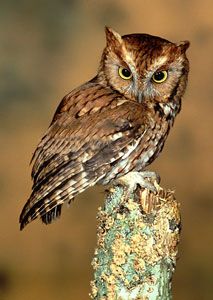
© Alan Murphy
Megascops asio
Family: (Strigidae) Owls
Eastern Screech-Owls are the most common owl in Houston. Very small (8" - 9"), they have two color morphs: gray and red, with gray being the most common. They are best seen in the early evening or pre-dawn hours. Their call is long, descending quavering whinny. A second call is a long, low trill. They are relatively tame and curious and have been known to follow evening strollers out of curiosity.
Profile by Grace Yaros: Roughly the size of an American Robin, these pint-sized predators are remarkably well-camouflaged. Individuals can be quite varied in appearance; there are gray and red color morphs, as well as intermediate individuals that are brownish overall. Red morph individuals are relatively more common in the southeastern U.S. and are rarer in the northern and western portions of their range.
Eastern Screech-Owls have two distinct song types: a whinny song and a trill song. Their whinny song is wavering and descends in pitch, named for its similarity to a horse’s whinny. This whinny song is used to defend territories. Trill songs consist of a long, quavering whistle all on one pitch, and are used to maintain contact among mated pairs and family groups. Males and females sing both song types, and mated pairs will engage in duets with each other. In addition to these songs, their vocal repertoire also includes hoots, chuckles, barks, and screeches.
Their distribution lies east of the Rocky Mountains, from southern Canada through northeastern Mexico. Two subspecies can be found in Texas, including McCall’s Eastern Screech-Owl, which are found only in southern Texas and northern Mexico. Unlike their northern relatives, this subspecies lacks a red morph, so all individuals are gray. Their voice also differs slightly from other subspecies; they do not sing whinny songs, only trill songs. Eastern Screech-Owls can be found in a wide variety of low-elevation forested habitats, including deciduous forests, southern pine forests, city parks, and wooded riparian habitat in the Great Plains. They nest in cavities and will readily use nest boxes in addition to natural cavities. Their diet is highly varied as well; they prey on small birds and mammals, frogs, lizards, and even earthworms!
Like other Screech-Owls, they are primarily nocturnal. The easiest way to find these petite owls is to listen for their songs and calls at night. During the daytime, they can sometimes be seen roosting in a cavity. An agitated flock of chickadees, jays and titmice may also alert you to the presence of an owl – songbirds will often mob Screech-Owls and other raptors that may prey on them. They can be found in wooded parks throughout the Houston area!
Invite Screech-Owls to Your Yard
Eastern Screech-Owls are found in woodlands and wooded urban areas. They mainly eat insects, but also like to hunt for small fish and frogs. The are especially fond of yards with ponds. They nest in tree cavities, but since those are in such short supply, they also readily use man-made Screech-Owl houses.
-
Cornell Lab of Ornithology
-
Bird Guide
-
Bird Library
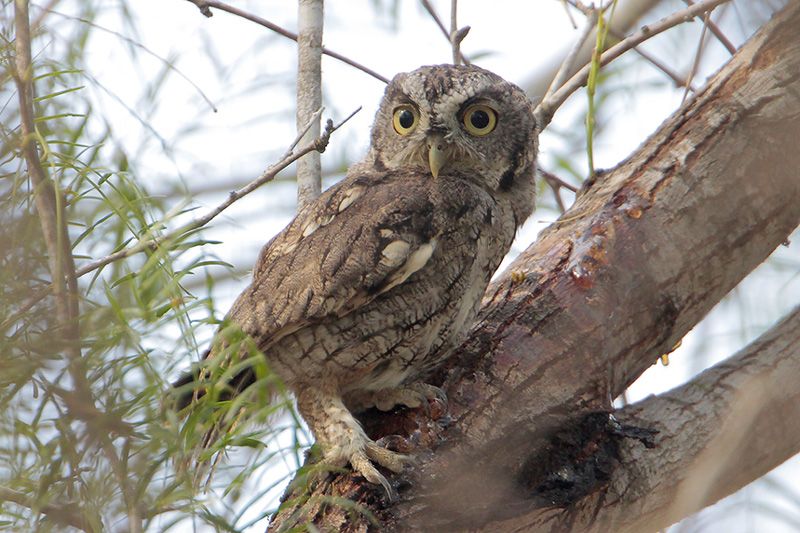
© Greg Lavaty, www.texastargetbirds.com
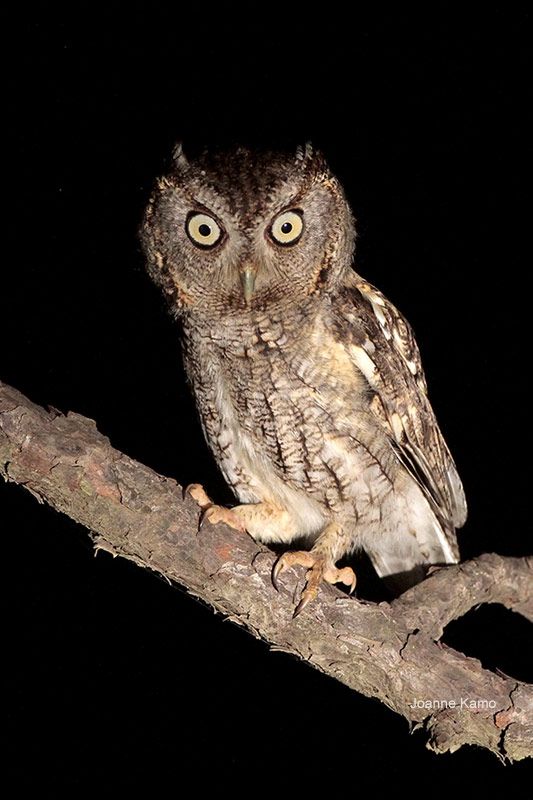
© Joanne Kamo

© Joanne Kamo
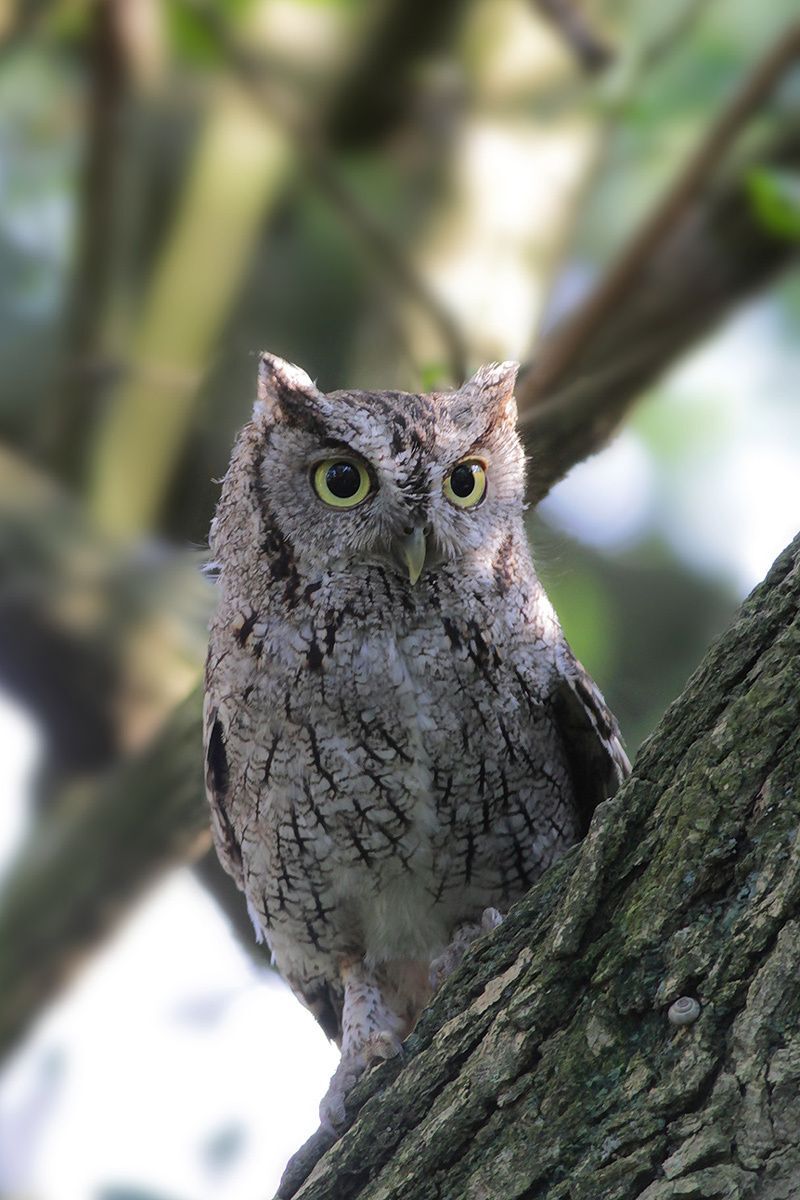
© Greg Lavaty, www.texastargetbirds.com
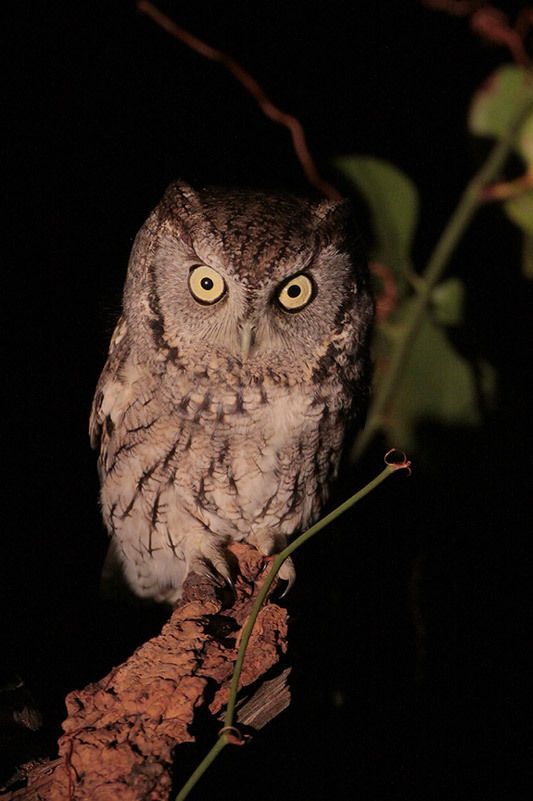
© Greg Lavaty, www.texastargetbirds.com
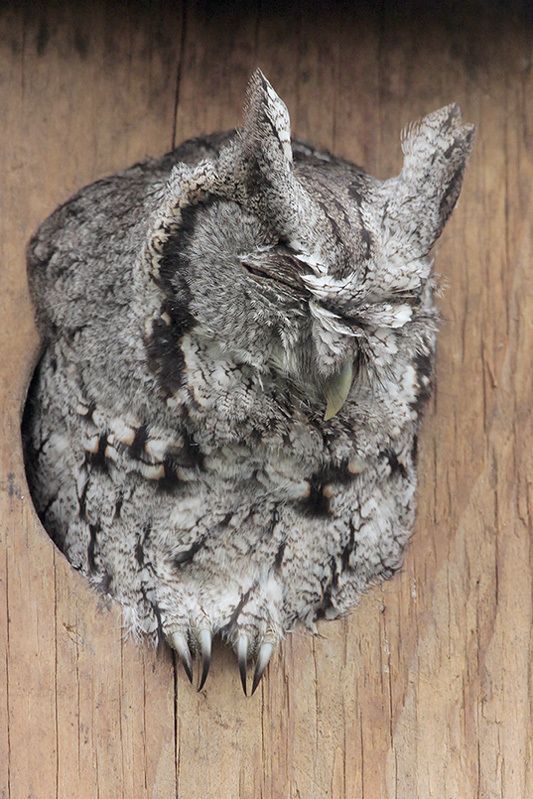
Shown emerging from a man-made owl house
© Greg Lavaty, www.texastargetbirds.com


